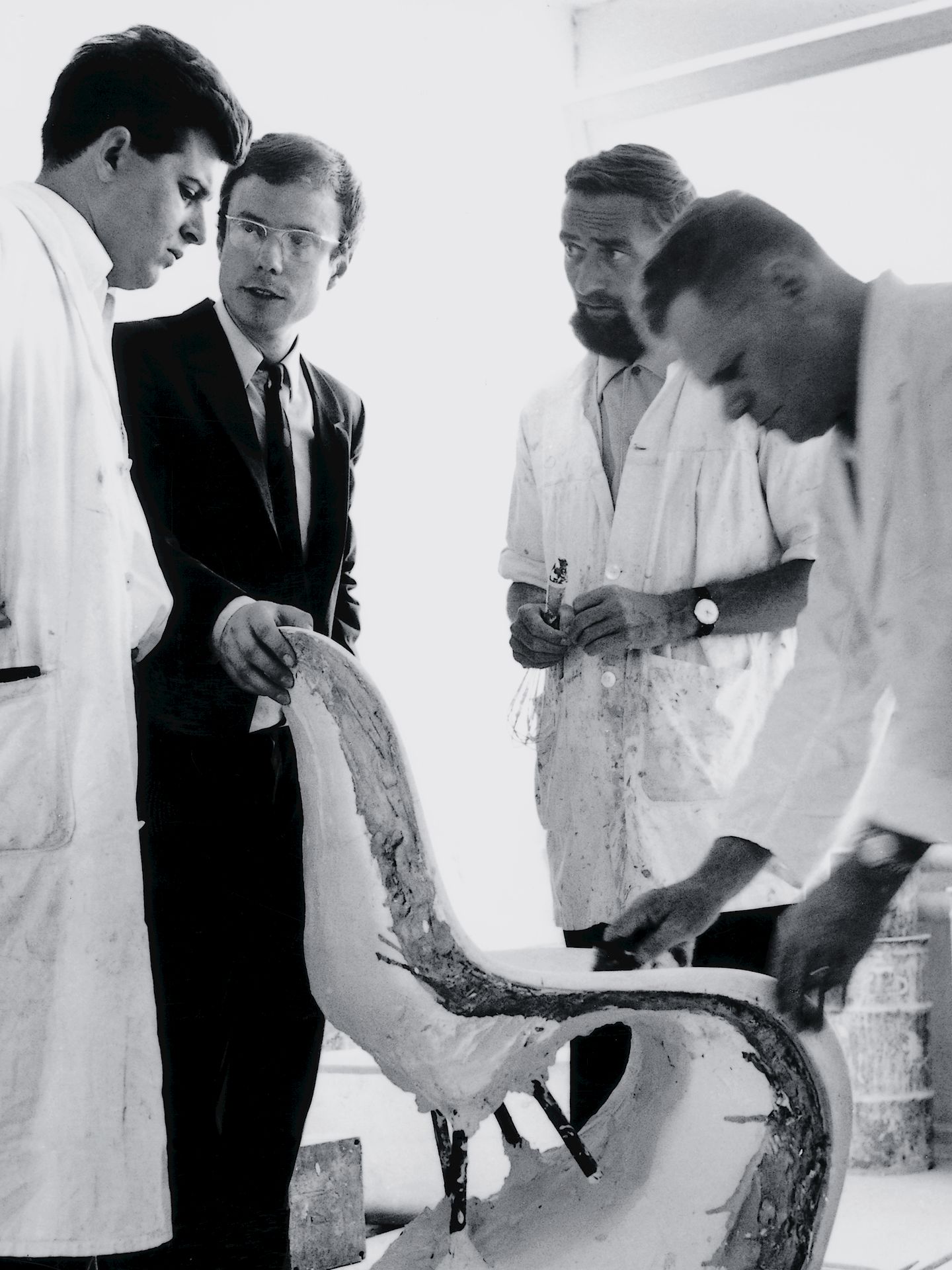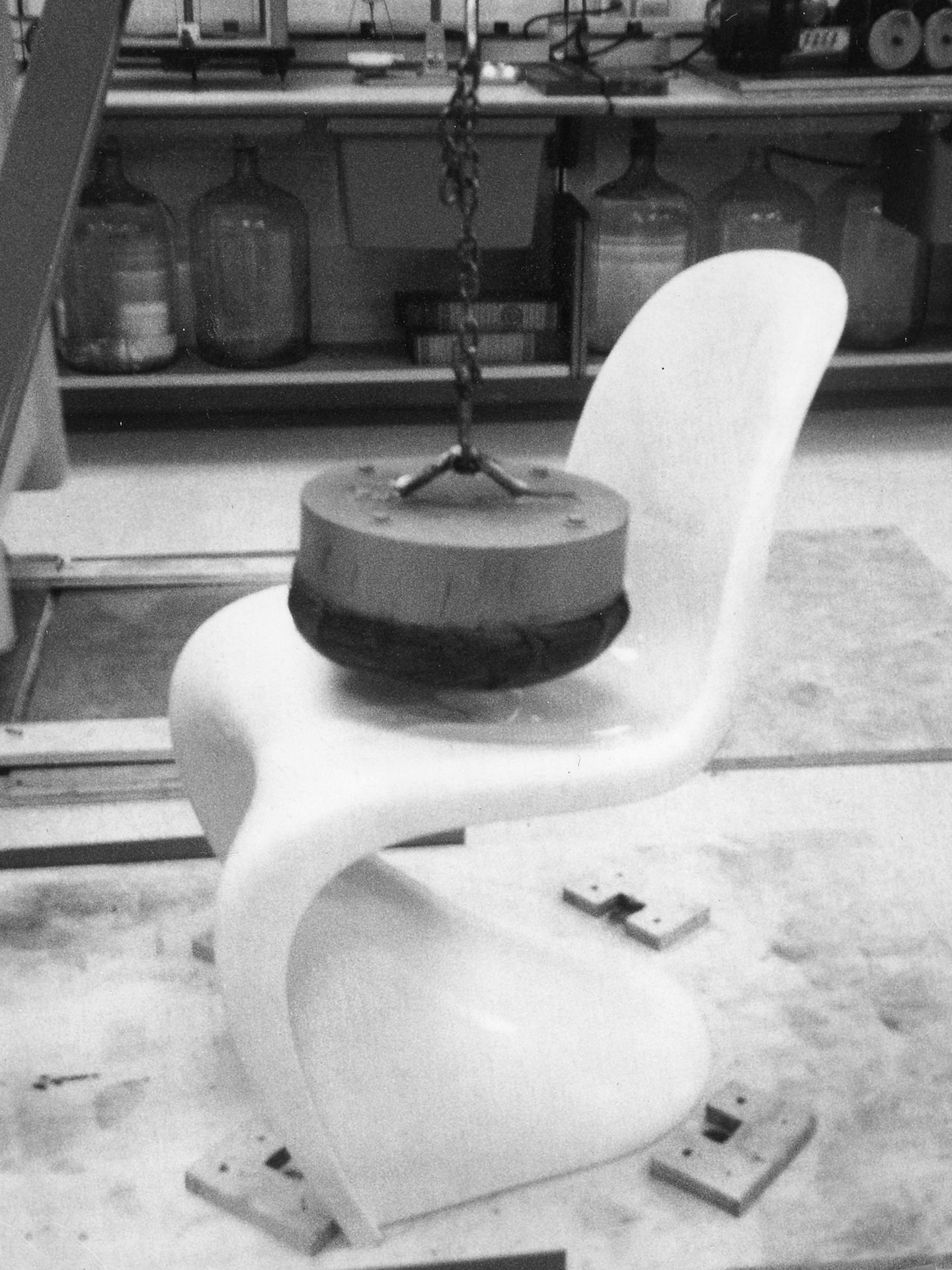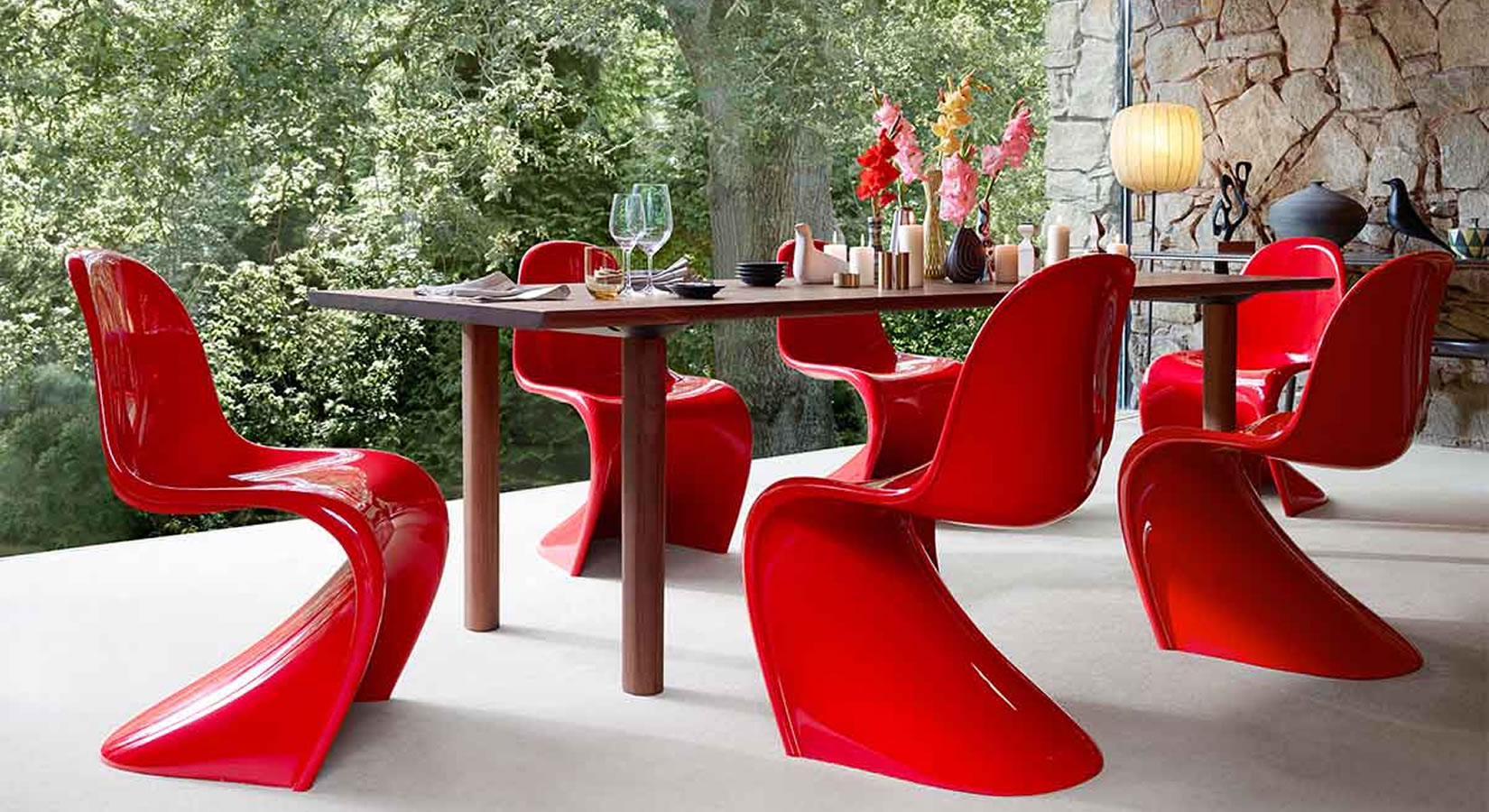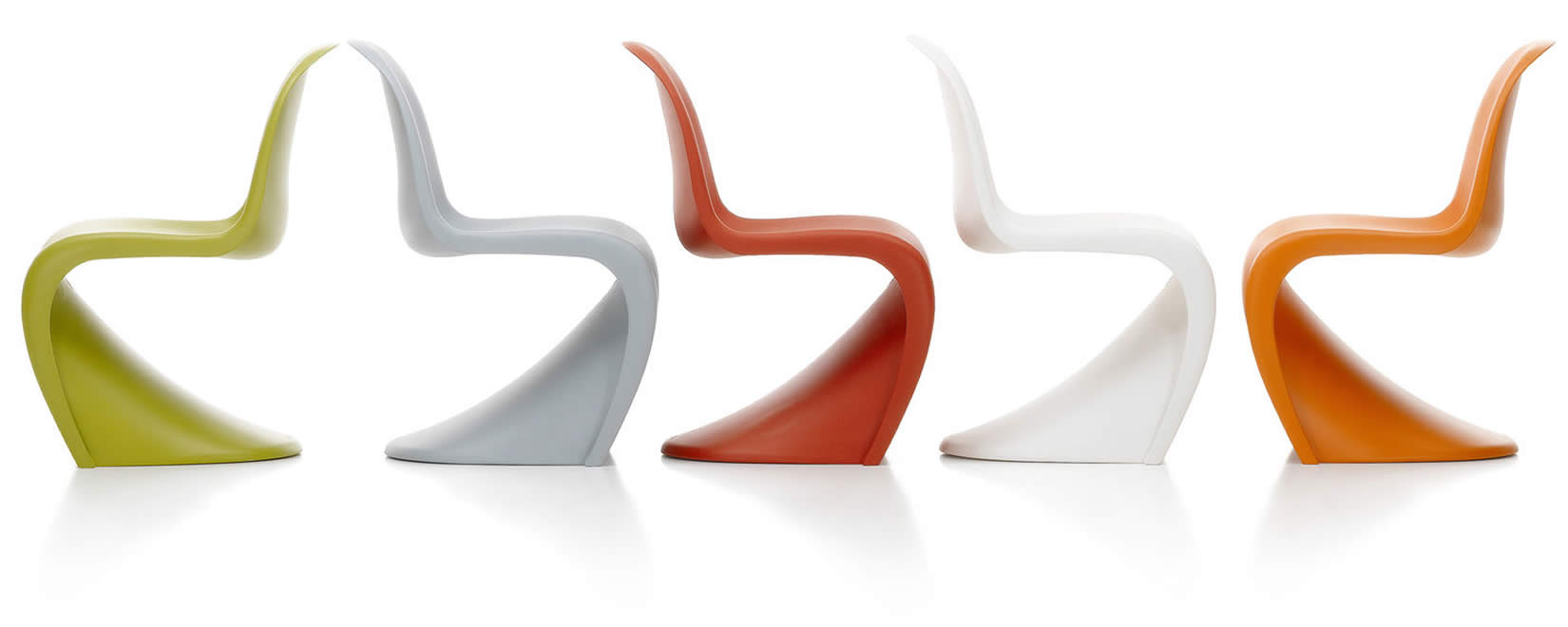1963 marked the start of a collaboration between Vitra and Verner Panton with the development of one of the most iconic chair designs of the 20th century. It turned out to be a nearly impossible challenge, as the bold contours imagined by the designer had to be reconciled with the physical limits of plastics technology and manufacturing requirements. It involved several years of research, testing, discarded designs and continuous prototype development: the final shape of the chair was the culmination of ten prototypes made of manually laminated, glass-fibre reinforced polyester. Verner Panton and Vitra developers worked persistently and steadfastly on the project, sacrificing their evenings and weekends.


A small pilot series of just 150 pieces was manufactured in 1967 using cold-pressed, glass-fibre reinforced polyester. It was the first all-plastic chair to be made in one piece with a cantilever design. Its sculptural shape in Panton’s trademark vibrant colours caused quite a sensation. However, the costly and complex procedure made it impossible to keep up with the ensuing demand. After further tests with rigid polyurethane foam from Bayer proved successful, mass production commenced with an innovative moulding technique in 1968. This yielded larger quantities but still required time-consuming manual finishing.

Verner Panton and Vitra were not satisfied with the status quo and continued to search for better alternatives. They believed to have found a solution in a new thermoplastic material developed by BASF, as the injection moulding process considerably reduced the need for finishing work. However, technology at that time did not enable variations in material thickness, which led to several modifications to the design – the most noticeable being a series of ridges in the transition zone between the base and seat. The material subsequently proved to be far less resistant to ageing and weathering than was initially assumed, causing the chairs to break and threatening Vitra’s image. Production was therefore discontinued in 1979. It took years for Vitra to recover from the shock of this quality defect. However, interest in the Panton Chair lived on over the years and Vitra resumed production in 1990 – returning to rigid polyurethane foam with its complex finishing, but greater resistance to breakage.

Per maggiori informazioni sulle nostre proposte contattateci:
FORM info@gerosadesign.com (+39) 031 480 476